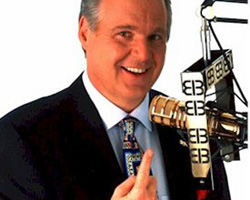- The 1960s was marked by clashes of ideologies and the result was a decade mired in turbulence — but also one that brought important changes
- College students and Civil Rights activists took on what they perceived as an oppressive and unjust political system. In the early- and mid-60s, Civil Rights activists organized marches and protests around the country. In 1963, Martin Luther King, Jr., led a 200,000 man march on Washington. The Civil Rights Act was signed the next year
- On July 10, 1962, NASA launched this spherical satellite into space with much fanfare. Later in the day, live broadcasts were beamed for the first time between North America and Europe
- As television became increasingly popular, writers reacted with the creation of a “new journalism” based largely on literary technique and first-person accounts, which straddled the line between literature and journalism
- Robert Woodward and Carl Bernstein (both reporters for the Washington Post at the time) uncovered President Richard Nixon’s involvement with the Watergate scandal, which led to Nixon’s resignation; considered a high water mark for American investigative journalism
- In 1977, American students Stephen P. Jobs and Stephen G. Wozniak founded the Apple Computer Co. and introduced the Apple II personal computer
- Four students were shot and killed by National Guardsman during protests on the Kent State campus. The students were protesting the U.S. invasion of Cambodia which President Nixon had announced the week before
- On January 22, 1973, a 7-2 decision by the Supreme Court legalized abortions in the U.S in the case of Roe v. Wade
- Gonzo journalism, in essence, an extension of “new journalism” added novelistic twist to usual standards of accuracy

Students killed by National Guardsmen during a protest against the war in Cambodia on Kent State campus
- In the 1980s, viewers had more media options. Thanks to deregulation, more channels were available and content was less restricted
- There was a boom in the magazine industry, as magazine publishers streamlined their content for specific audiences
- In 1984, Oprah Winfrey outscored the ratings of the popular national talk show hosted by Phil Donahue and changed the format of daytime talk show television by providing a platform for honest, sincere discussions of sensitive and sometimes controversial topics
- Music Television (MTV) aired the first music video in August 1981; only later would the network move into more conventional programing
- Rapid deregulation under the Reagan administration made new business developments possible, but as a result, the broadcast industry began to focus more on the competitive nature of the industry and less on concepts of the public interest and public service
- The media consolidations and the emphasis on “profit over product” journalism of the 1980’s continued into the 1990’s, led by American companies such as GE, Viacom, Time Warner, Disney, as well as Australian Rupert Murdoch’s News Corp, which spawned the CNN rival Fox News in 1996
- In the 1991 Rodney King Beating, a routine traffic stop in Los Angeles turned violent when a African American motorist was beaten by numerous, predominantly white police officers. The incident was caught on video by a non-journalist and ran over and over on local and national news programs
- Islamic terrorists intent on destroying the twin towers of the World Trade Center, detonated a car bomb in the parking garage below Tower One: six people were killed and over 1000 were injured
- By the late-1990’s, the Internet was becoming a part of many American homes and businesses. Consumers no longer had to get their information on the media’s schedule, as the Internet enabled on-demand news, entertainment, and information
- As in the 1960s, the youth of the nation became disenchanted with the conservative and sedate ideals of the parents generation, and in some cases, their rebellion proved destructive and horrible (i.e the Columbine shooting)




Leave a response